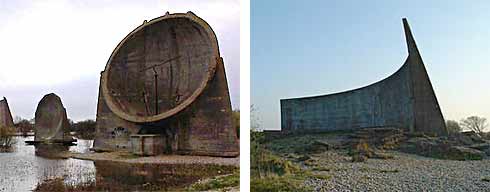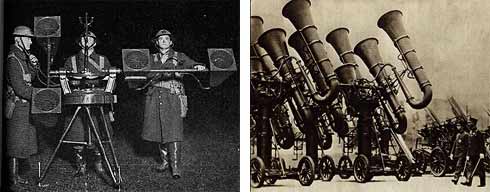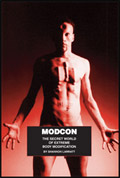Obsolete advanced technology fascinates me. For example, in the Victorian era, before the petroleum and internal combustion engine disaster period, steam power ruled. Not only were vehicles and factories and even motorcycles and power lawnmowers driven by steam, but in major cities like London, high pressure water lines snaked the city like power cables do today — instead of using electric motors, elevators were moved by hydraulic pressure, driven by steam pumps. The world of the past wasn't more primitive techologically than our own — it just had different technologies built around different sciences, and a much smaller palette of sciences to choose from.
Another example is acoustic “radar” — remember, RADAR as in detecting objects from far away using radio wave reflections didn't start to become viable until the mid 30s, and wasn't a mature technology until the well into WWII. However, Europe (and Japan and others) had been facing situations — like bombers approaching British shores — for longer than that: thus acoustic location technologies. Some of you may have seen the acoustic locater walls around England for example:

A related piece of technology involved listening horns — literally like an old fashioned horn for those hard of hearing, but much larger, mounted on a tiltable base, and spread far apart. The end effect of this was a steerable acoustic telescope that could not only hear sounds at create distances, but due to stereo effects (the sound being louder on one side than the other), could also directionally locate the sound. By using four horns (two axis) and other multi-axis configurations, full-sky search ability was gained.

Well, I'm going to fiddle with these FTP functions a little more now. I'm hoping to have them running fully by the middle of next week.
PS. Douglas Self deserves an award for The Museum of RetroTech



Post a Comment